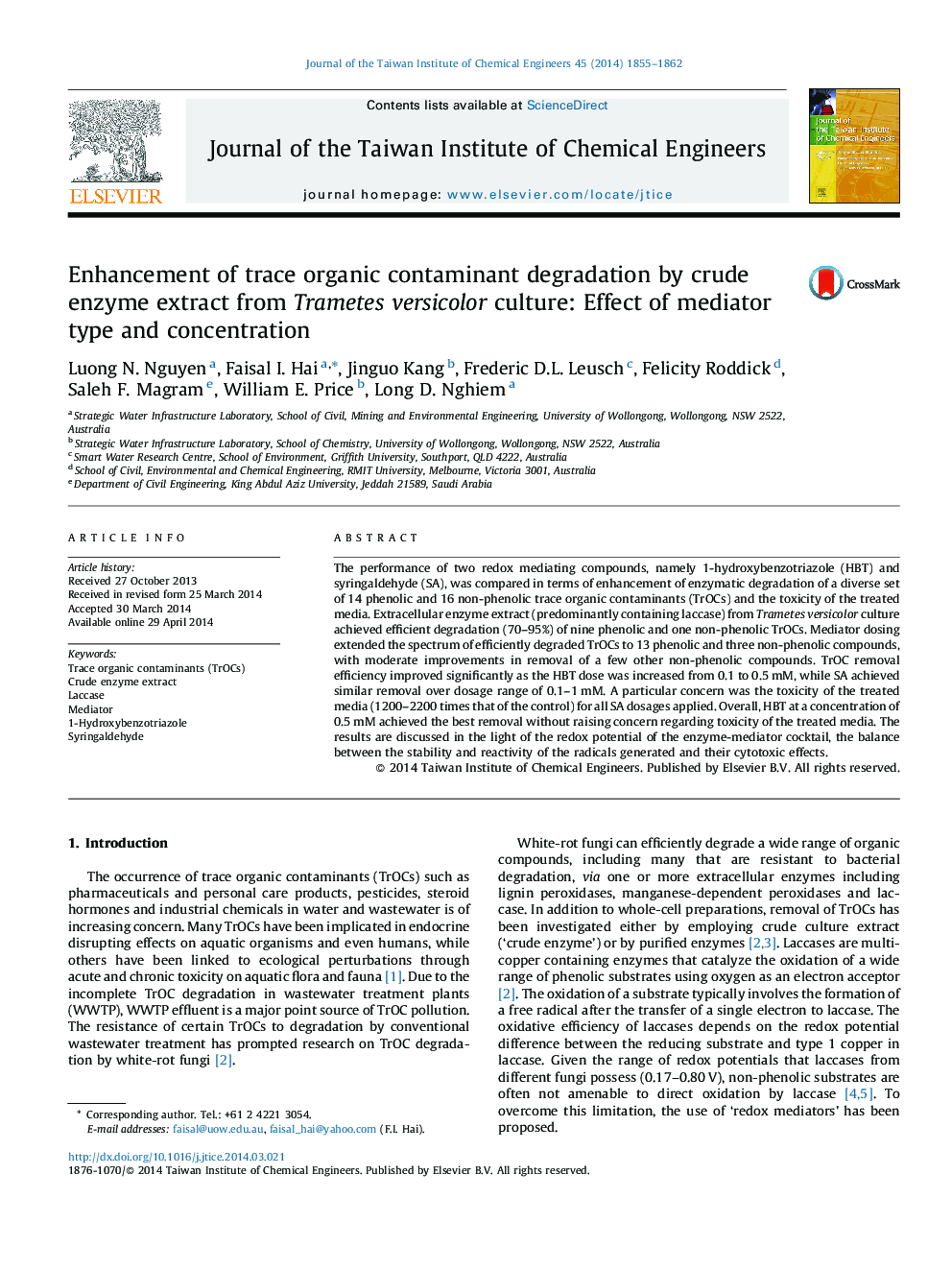| Article ID | Journal | Published Year | Pages | File Type |
|---|---|---|---|---|
| 690949 | Journal of the Taiwan Institute of Chemical Engineers | 2014 | 8 Pages |
•Enzyme extract degraded all phenolic TrOCs without electron withdrawing groups.•Unlike other non-phenolic TrOCs, diclofenac removal by enzyme extract was high.•Despite similar reaction routes 1-hydroxybenzotriazole outperformed syringaldehyde.•Syringaldehyde performance did not improve beyond a dosage of 0.1 mM.•All dosages of syringaldehyde led to increased toxicity of the treated media.
The performance of two redox mediating compounds, namely 1-hydroxybenzotriazole (HBT) and syringaldehyde (SA), was compared in terms of enhancement of enzymatic degradation of a diverse set of 14 phenolic and 16 non-phenolic trace organic contaminants (TrOCs) and the toxicity of the treated media. Extracellular enzyme extract (predominantly containing laccase) from Trametes versicolor culture achieved efficient degradation (70–95%) of nine phenolic and one non-phenolic TrOCs. Mediator dosing extended the spectrum of efficiently degraded TrOCs to 13 phenolic and three non-phenolic compounds, with moderate improvements in removal of a few other non-phenolic compounds. TrOC removal efficiency improved significantly as the HBT dose was increased from 0.1 to 0.5 mM, while SA achieved similar removal over dosage range of 0.1–1 mM. A particular concern was the toxicity of the treated media (1200–2200 times that of the control) for all SA dosages applied. Overall, HBT at a concentration of 0.5 mM achieved the best removal without raising concern regarding toxicity of the treated media. The results are discussed in the light of the redox potential of the enzyme-mediator cocktail, the balance between the stability and reactivity of the radicals generated and their cytotoxic effects.
